Tana Bana…
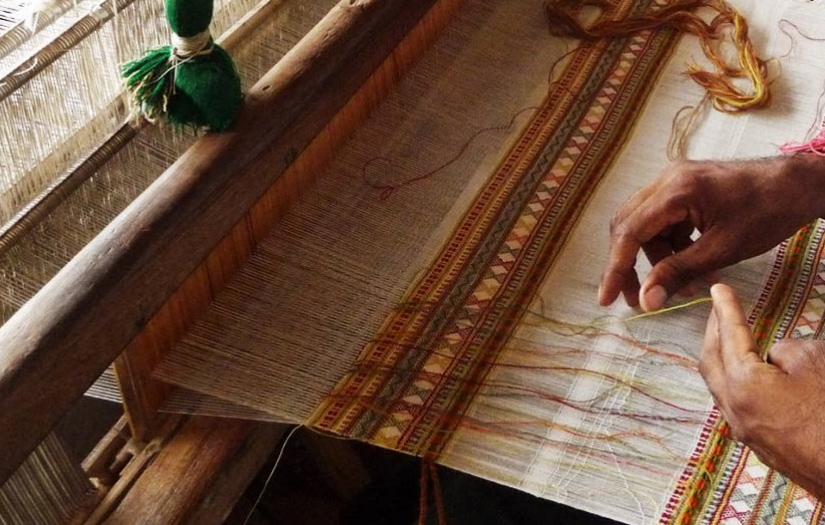
Ever been to a music concert? …. Well the one that plays in the houses of Bhujodiis a wee bit different, not just in what you hear but also in the instruments that play. The musicians of Bhujodi play on … from morning to dusk, meditatively.
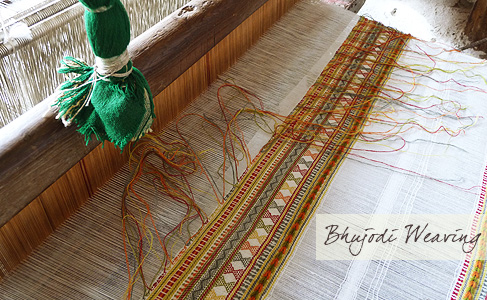
Their orchestra constitutes of spin wheels for strings, wooden loom for beats, and for vocals there are chirping birds, sojourning the mud ledges for grains and water, off springs giggling and playing pee-ka-boo across the courtyard, Mooing cow in the corner and almost certainly, filling the background will be either the folk tunes or the old bollywood melodies.
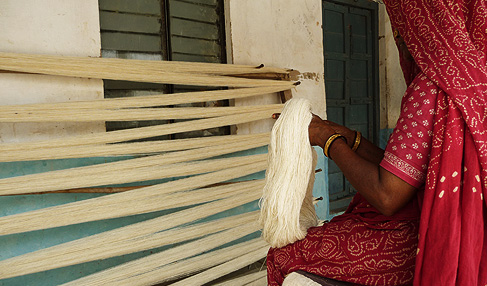
All of this manifesting into a concert, not just ears get accustomed to, but hands follow too. Meditatively weaving motifs out of a deeper conscience we call genetic inheritance. Each woven fabric carries with it, millions of such consciences, intertwined with the warp and the weft, closely put together to form the fabric of life.
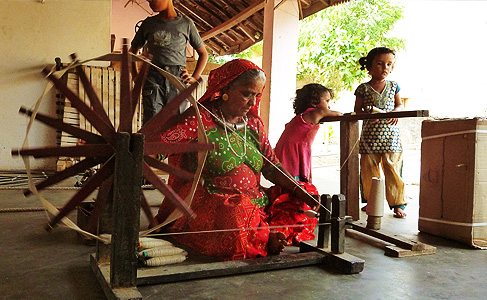
Bhujodi, a 500 years old village in kutch is the mother to this need-fully evolved craft, shouldered by 200 of its weavers today. The craft is said to have evolved as a need to cover against weather, at the time barter system was practiced as a method of exchange. ‘Rabaris’ being the original nomads and cattle rearers provided wool, milk products and grains to the village and ‘Vankars’ took up to weaving cloth. While rearing cattle pretty much remained the same, the Vankars with an indigenous technique in hand had breakthroughs one after the other.

The basic structure of the loom remained the same, but it evolved to a more convenient model with time. The one in use today has the shuttle movement controlled by a foot-over pedal, as against the slow process of passing it through the warp manually. The fabric got finer with speed and variety of yarns available. The motifs however remained traditional and characteristic of communities. Like wheel, weaving is an invention that revolutionized the way we saw life there after, the basics holding valid till date.
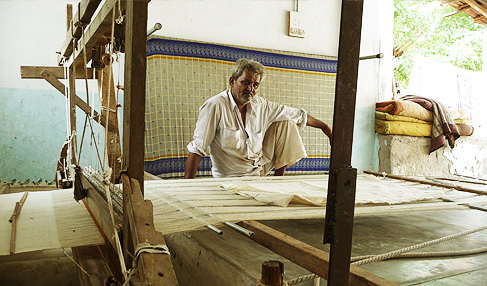
While some wool from locally grown sheep is still used, they also procure silk from Bangalore, acrylic from Ludhiana, wool from Badmere and cotton from various places, to cater to the increasing demands. The fine cotton has enabled them to create more intricate and colorful designs. Such pieces may have 70 threads per square inch instead of the usual 24. Weaving of a piece may take days to months, depending upon the intricacy and newness of the design.
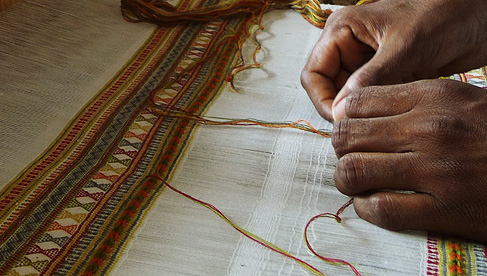
The yarn in its raw form is soft, breakable and capable of getting entangled easily. To get rid of these properties, a thin paste of wheat flour with water is boiled and the bunch of woolen strands is soaked in it. Soon after sun drying it in the fields, a layer of the paste covers the strands. These are then separated by combing them apart with a brush.

This bunch of strong strands is then taken inside the house, where several people are engaged in different stages of the weaving process. Some are busy cranking a machine that spins the thread onto a spindle, preparing the weft. A woman is working at high-speed to prepare the warp thread on a wooden frame called‘chaukhta’. In the corner, a man is weaving on a shuttle loom. Vankaar Mosi Beljiexplained that, through the means of division of labor, it’s the men who sit on the loom as it needs a lot of stamina, while women take care of the auxiliary processes like making yarn on the charkha, laying it on the loom and adding value to the woven articles.
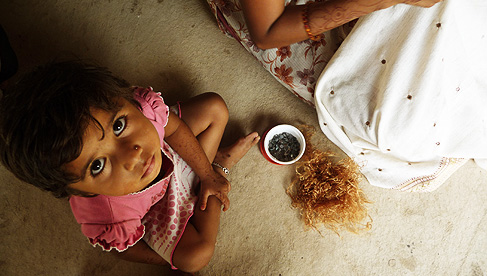
Inside his room, carpets, shawls, stoles and placemats were neatly piled. Some had bright colors others dark, and still others retained the natural color of the fibers. Many of them contained small round mirrors that were so naturally into the woven design.
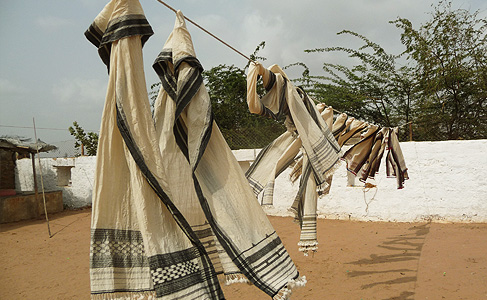
Apart from Bhujodi, Vannora, Kota, Jamthara, Sarli, Bhuj, Kadarthi are other villages in Kutch region where weaving happens. Weaving as a process goes around the year apart from the rainy season, when work hits a lean because of practical reasons.
Not relying too much on today’s education system, the vankars train their future weavers from a very tender age. Growing around the traditional looms in the household, the kids learn by seeing, even before they develop conscience.
Buy Bhujodi weaving online ~ Shop.Gaatha.com
Learn more about Bhujodi weaving ~ Gaatha.org
~










